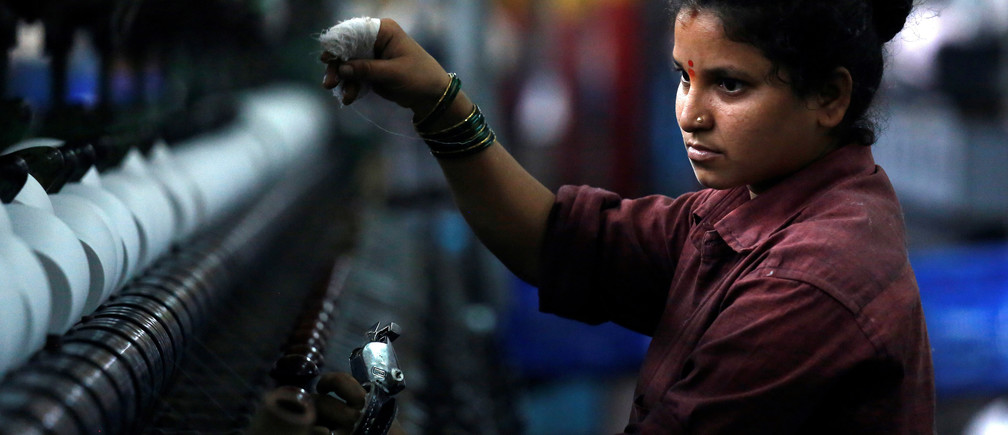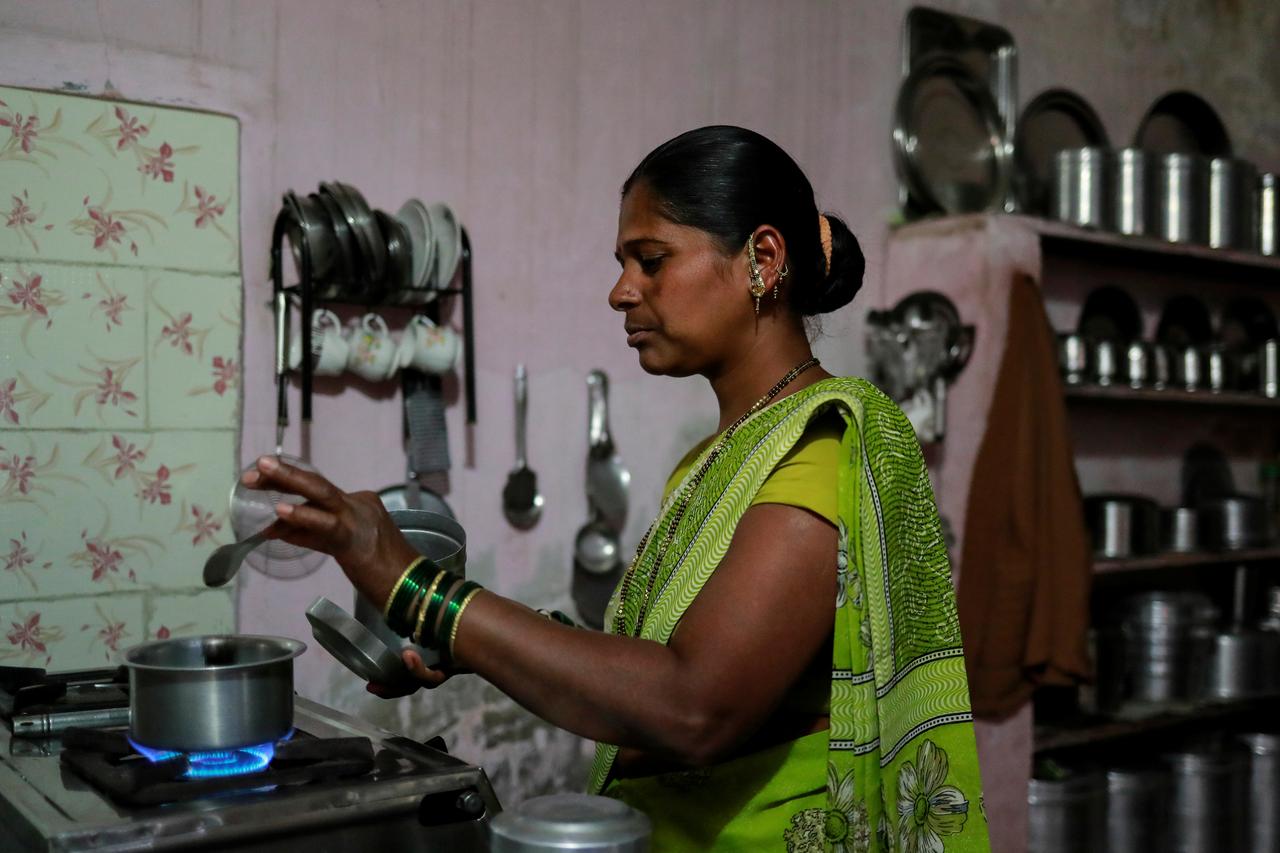The eagerness to flatten the curve has linearly set back gender equity graphs by decades, if not centuries. The compounded socio-economic impact of the economy in the wake of the pandemic will translate as a catastrophe in the lives of Indian women, who prior to the onset of the pandemic were already vulnerable – earning and saving less, labouring in insecure job markets and surviving closer to poverty.
The Centre for Monitoring Indian Economy (CMIE) suggests an estimated 17 million women have been put out of work, in both the formal and informal sectors. Alternatively, at least four out of ten women in India have been rendered jobless between March and April 2020, thereby locked-down, quite literally, financially and otherwise owing to the nationwide lockdown. The battle of atmanirbharta in the country will once again be fought on the backs of women and their centuries-old unpaid, unrecognised labour.
The taxing care economy of the household
Nullifying the urban legend of the “great equaliser”, the pandemic has reinstated gendered domestic roles which push for the male breadwinner of the family to carry out income earning activities. The female caregiver, expected to prioritise care of the community over self, is traditionally pushed out of the equation or worse, to the peripheries of such economic stratification.
Women are losing paid work and doing more unpaid labour due to the pandemic, as unpaid care work has increased manifold. The heightened anxiety of maintaining hygiene in a household while possibly working from home, hunching over housework and the pressing care needs of the sick, elderly and out-of-school children – maintaining sanity or self care is nowhere on the regimen for the average Indian naari.
Also read: Periods and Pandemic: Secret Eating During the Month of Ramzan
The stereotype often comes with no choice as the availability of men to shoulder these household responsibilities is limited to none. As per Organisation for Economic Cooperation and Development, men on average spend 31 minutes for such chores as against the 297 thankless minutes (as much as six hours in India) spent by a woman.
The financial and emotional distress of the outbreak coupled with the aggravated threat of physical abuse by intimate partners doubly exposes women. The erosion of income further negates women’s autonomy and agency, particularly within the household. It curtails their ability to reach out and protect themselves in case of a health emergency or abuse, especially relating to matters of sexual and reproductive health.
Urban prospect of a “Shecession”
The health emergency has reset global economic priorities, placing the gender pay gap presumably at the bottom – if not already off the list. The bulk of layoffs for white collar jobs from corporations are coming for their female employees. They are seen as more easily disposable from the patriarchal lens of not being primary earners of the family. Women in the formal workforce may also be viewed as costly with reference to paid maternity and childcare leaves.

Photo: Reuters/Francis Mascarenhas
Conversely, the work-from-home alternative offers more flexible options for women to remain in the economy but the pool of such formal employment remains disproportionately limited – largely urban, educated and upper class. The World Economic Forum estimates how full economic parity was 257 years away, even before the crisis. The pandemic thus clouds a heavy mask on women’s already poor economic outlook. Historic evidence from earlier outbreaks suggests how economic recoveries from crises are centred on bringing back men into work. The precedent has to be proactively undone in the course of any economic reopening.
Addressing disparities: the rural and the informal
Of the approximately 432 million working age women in India, about 343 million are engaged in unpaid, informal work as per a Google & Bain Analysis. Thus, the informal sector outrightly bearing the brunt of this outbreak is overwhelmingly female and insecure. With work demanding close human interaction rendered infeasible due to distancing norms, female workers involved in agriculture, paid domestic work, manufacturing, construction and retail have been knocked off of their meagre fiscal survival.
Also read: At Delhi’s Red Light Area, Sex Workers Plead For Help
The demand for women’s time and labour – both within and outside the household – is rising in parts of rural, agrarian India to avoid hiring labour due to fears of infection. The urgency to sustain livelihoods will hence create a desperate pool of labour that will be willing to work at very low wages for longer hours, pushing women deeper into high risk sectors. With such economic gullibility, the ex-gratia amount of Rs 500 for the 20 crore women Jan Dhan account holders comes off as a mere stitch in the largely torn socio-economic-political fabric of the state’s response to the pandemic.
The conversation collapses before it even begins to talk of the millions of migrant women workers forced to flee cities for their rural homes with little notice or regard for their health, travel or safety risks involved. The gendered blind spot of COVID-19 policy making comes off as apathetic; primarily towards its women – in the workforce and outside of it, in the absence of any safety net sponsored by the state.
Anticipated health risks
The gendered moral obligation of care and its translation into praxis reflects in the 70% figure of the global healthcare workforce being female. WHO reports the figure is a massive 88.9% in India. The women ‘warriors’ battling the pandemic war from the frontlines are also the ones incurring maximum war losses, that is, the pressing occupational hazard of contracting COVID-19. Global evidence suggests that more men than women are dying from the virus, due to possible immunological and sex/gender-based differences. This pressures women to provide food security for the family, while also prioritising the nutrition needs of men in such times.
Also read: Standing on the Shoulders of Giants
The historic sex based discrimination in the household alters resource allocation – of food, water, and hygiene access. These exacerbated health inequities will further spike women-specific illnesses such as anaemia, malnutrition, maternal mortality rates and hygiene risks.
The ASHAs and anganwadi workers (90% of whom are women) intrinsically engaged in public health outreach work during the pandemic, are not even recognised as “workers” or paid a regular wage. This lack of economic protection and utter disregard for female care work/workers does not reflect surprisingly on a government that had to be requested to not tax sanitary napkins in a health emergency induced lockdown.
Is a recovery likely, or even possible?
The dismal state of India’s female labour force participation does not exist in a vacuum. The ailing notion of women’s labour being a moral obligation and responsibility of care owed towards the family/society has been a modus operandi for centuries, transgressing the boundaries of paid work. The state is party to the complacency as female labour is not necessarily subject to market risks when it has consistently been underpaid or unpaid and undervalued in job markets and social structures. The goodwill and gratuitous nature of remunerating women for their care work in homes, communities, and health facilities needs to go.
Any economic reopening will have to zoom in on gender as an overwhelming disparity that co-opts economic structures inherently failing to represent women and their concerns. If women are holding the sails on the frontlines, the wheel of decision and policy making involved in outbreak preparedness and response demands handing over, especially in task forces and response committees. Immediate government bailouts and incentivised investments must extend to the informal sector and small businesses that support women entrepreneurs and their labour, including targeted skill building and experience in care work.
The implications of being locked-down will be gendered, so shall be the response. The atmanirbhar economy cannot be envisioned without compensating for the visible loss of economic freedom, security and purchasing power of women when operating in a nexus with the economy of care and exposure to the outbreak. It demands a drawing of the line; any ‘laxman rekha’ must assert adequate recognition, representation and remuneration of women’s labour, minus the gender roles.
Mansi Vijay is a final-year undergraduate student of English Literature from Miranda House, Delhi University. She is also a spoken word artist and writer.
Featured image credit: Reuters

